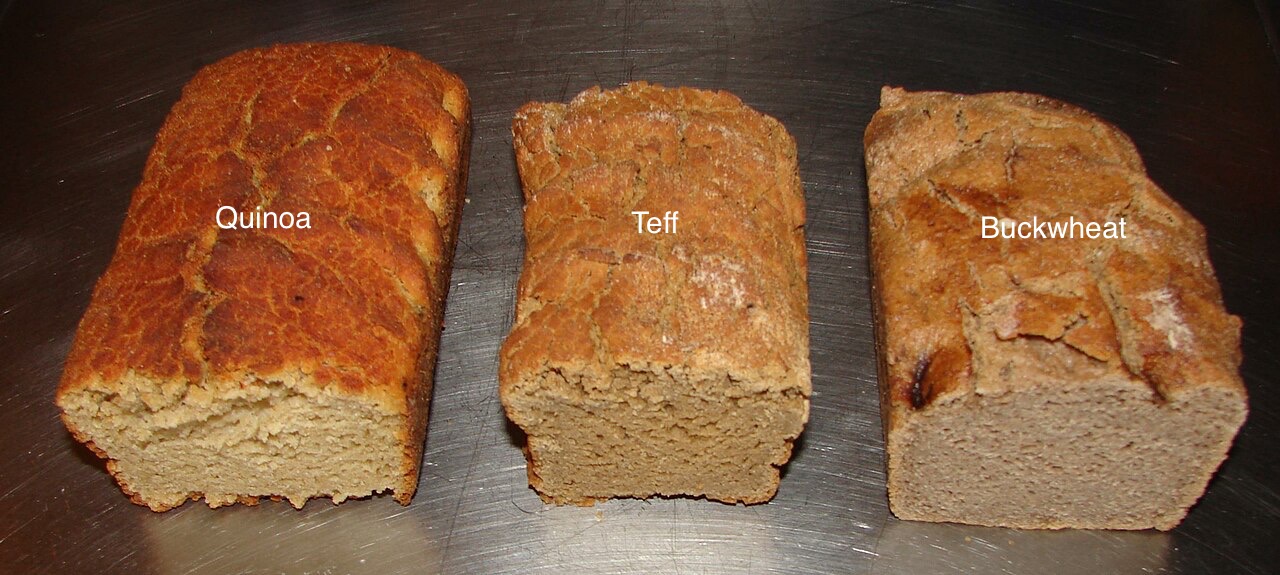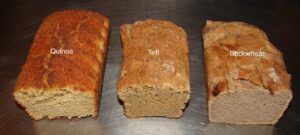Baking Substitutions: how to work around common food allergies

Making substitutions when baking is much more difficult than with other types of recipes. For example, a salad that contains rice cheese instead of dairy cheese will still be essentially the same. However, substitutions in baking can affect the texture, moisture content and colour of a baked good. They can also affect how well the product rises.
The more substitutions you make within a single recipe, the more the final product will be altered. These tips will help you adapt your favourite recipes so your product will be as close to the original as possible.
Tips for the New Baker
Don’t be discouraged if you have a few failed attempts. Working with substitutions is a learning process that requires time and patience. Before striking out on your own, it is a good idea to “test the waters” by trying recipes that are designed specifically for your food allergy or sensitivity.
Without Wheat
Wheat flour is by far the best for baking. Its high gluten content provides structure, texture and an ability to absorb moisture. Non-wheat flours high in gluten (such as spelt) will create results very similar to a wheat-based product. Gluten-free baking is more of a challenge. The trick is to blend a few gluten-free flours with vegetable gums to help stabilize the product (see all purpose gluten-free flour mix) . This mix can be used as a one-to-one substitution for wheat in most recipes. Once you become comfortable with gluten-free baking, try experimenting with mixes of your own creation using the wheat substitutions chart (on page 2) as a guide. Watch gluten-free products very carefully while baking to ensure they are not overdone.
Without Milk
Milk is the least critical ingredient in baking and thus is the easiest to change. Substitutions will affect the fat content, sweetness and the ability to colour the baked good. If required, sweetness and fat content can be corrected by adjusting the sweetener and fat amounts in the recipe. Soy milk tends to brown baked goods prematurely, while potato milk tends to whiten products. When baking, check your product often. If it’s getting too brown, cover with tin foil and resume baking. If it’s not brown enough bake until the product passes the “toothpick test”. A few minutes under the broiler can add a little colour if necessary. Rice milk has a tendency to make dough a little too watery which can be corrected by adding a little extra oil to the recipe.
Without Eggs
Eggs provide richness, colour, protein and tenderness. Beaten egg whites provide extra volume and air. Most egg replacers on the market will provide instructions for replacing whole eggs and egg whites. Eggs also act as binding and leavening agents. Figuring out the purpose the eggs serve in a recipe will help determine which type of egg substitute to use (see chart or page two of this post). When in doubt, assume eggs are in the recipe to provide leavening and use that set of substitutes.
Leavening
Leaveners help baked goods rise by releasing carbon dioxide gas that gets trapped in the dough. Without a mechanism (like a gluten structure) to trap the gases, little or no leavening can occur. A high-powered, stand-up mixer can help. Beating air into the dough gives the leavening agent a place to release the gases and makes the dough rise. In bread baking, even doughs that are high in gluten can benefit from electric beating; it helps form the dough into a cohesive ball which is necessary for a good texture and proper rising.
If you wish to work without baker’s yeast, try making an authentic sourdough bread. Sourdough starter cannot be used as a one-to-one substitution so it is best to start with a specific recipe for this type of bread before adapting your regular recipes.
If you are allergic to the starch used in commercial baking powders, you can make your own by substituting a different kind of starch.
Next – Substitution Equivalents

Pages: 1 2
No Comments